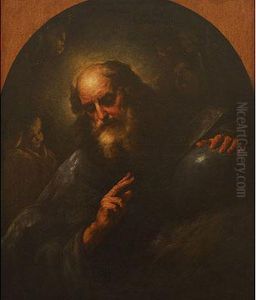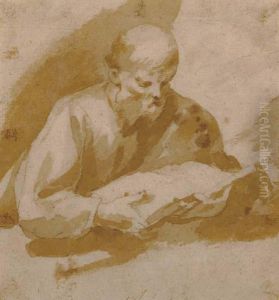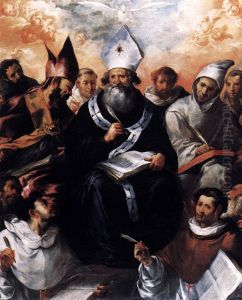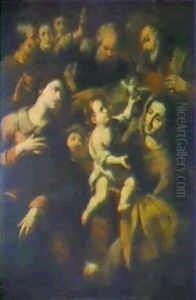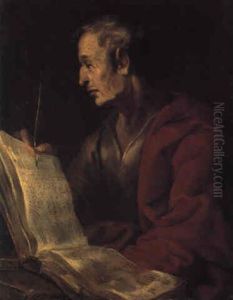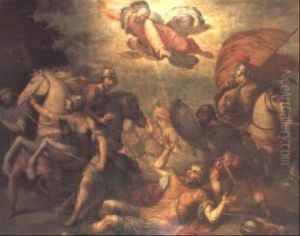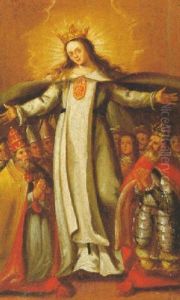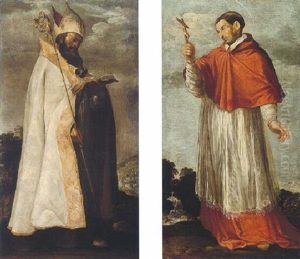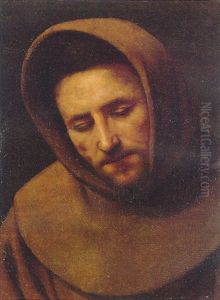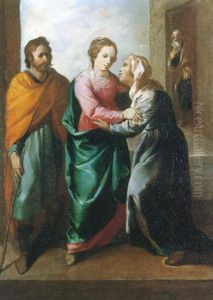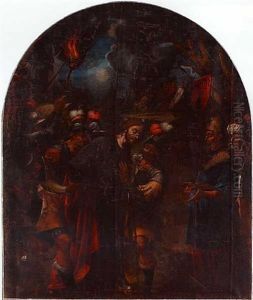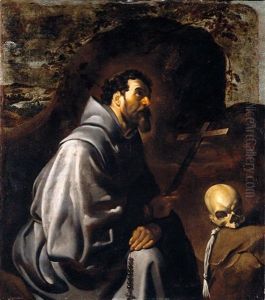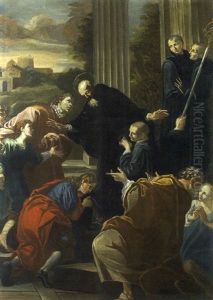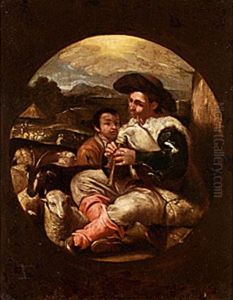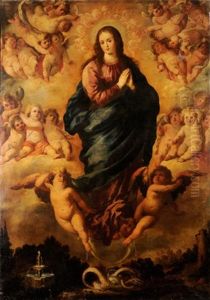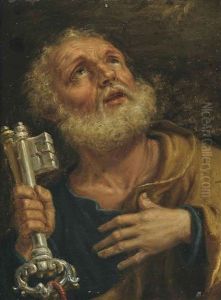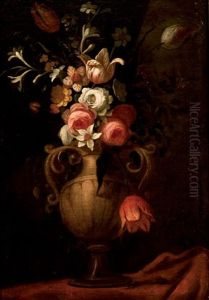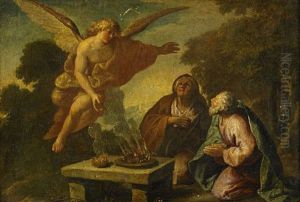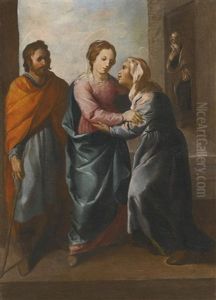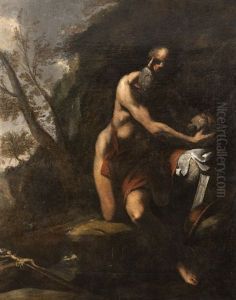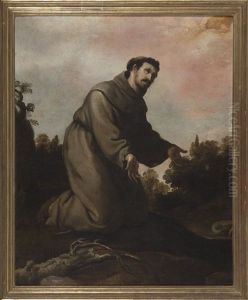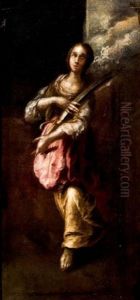Francisco Herrera The Elder Paintings
Francisco Herrera the Elder was a pivotal figure in Spanish Baroque painting, born in Sevilla (Seville), Spain, in 1590. He was renowned for his powerful and innovative approach to painting, which exerted a considerable influence on the development of Spanish art during the 17th century.
Herrera's early life is not well-documented, but he is known to have been active in Seville's painting community by the beginning of the 1620s. He established a workshop that became one of the most important in the city, producing a wide range of artworks, including religious pieces for churches and monasteries, as well as secular works. His style is characterized by a dynamic use of line and a strong chiaroscuro that imbues his paintings with dramatic intensity.
One of Herrera's most significant contributions to Spanish painting was his influence on the younger generation of artists. His workshop was a training ground for a number of prominent painters, including his son, Francisco Herrera the Younger, who would go on to develop his own successful career. The Elder Herrera's bold brushwork and the emotive power of his paintings were crucial in the evolution of Sevillian Baroque and had a lasting impact on the styles of artists such as Bartolomé Esteban Murillo and Juan de Valdés Leal.
In addition to his painting, Herrera was also involved in the design and execution of temporary decorations for public festivities, which were a significant aspect of civic and religious life in 17th century Spain. These works, although ephemeral, further demonstrate his versatility and creativity as an artist.
Despite his success, Herrera was described by contemporaries as having a difficult personality, which may have led to conflicts with other artists and patrons. This contentious nature, coupled with competition from younger artists, might have contributed to his decision to leave Seville around 1650. He spent the last few years of his life in Madrid, where he continued to paint until his death in 1654.
Throughout his career, Francisco Herrera the Elder left a lasting legacy on the Spanish art world, his work bridging the gap between the late Mannerist style and the emerging Baroque sensibility. His energetic brushstrokes, mastery of light and shadow, and his dramatic, often austere compositions would resonate through the works of subsequent generations of Spanish artists.
